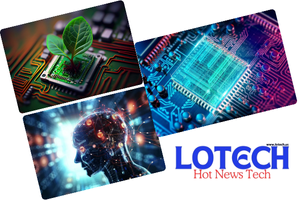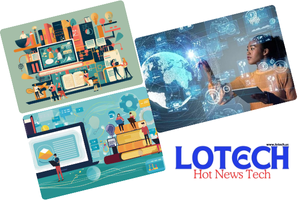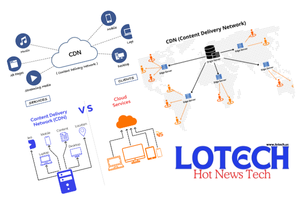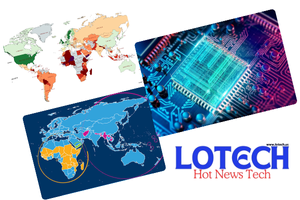Technological development appears to be rising unabated in the modern society that is characterized by lots of changes. However, riding this digital wave, there is a renewed interest in slow technology—essence, effectiveness, and in most cases, sustainability. Knowing what it means to be a low tech tool does allow people to make the right decisions regarding their conduct with regards to the gadgets in their lives. This article seeks to define low-tech, discuss the advantages of low-tech, provide examples of low-tech and finally compare it with high-tech.
Understanding Low-Tech
Low-tech is simplicity in the sense that it is not a computerized or high tech gadget, frequently involving a key element of manual operation. Such technologies can be as ancient as thousands of years or some innovations that have recently been modified to meet the present-day requirement. The first objective of the structure is to be sustainable, accessible, and environmentally friendly. Low tech solutions focus mainly on utilitarian approaches, with no requirement for the sophisticated tech systems.
Low-Tech Characteristics
Simplicity: As pointed out above, low-tech solutions are inform and simple to comprehend. They frequently involve simple mechanical manipulations that any person does not have to be uniquely qualified to perform.
Durability: Most of the low tech products are known to be durable, made from high impact materials that can take a knock or two.
Affordability: Low tech products do not require highly technical parts hence are relatively cheap compared to highly technical products hence can readily please the market.
Sustainability: Low-tech tends to have a focus on reducing one’s environmental impact, frequently incorporating reusable materials into designs.
Self-Sufficiency: These technologies promote self-sufficiency: the gadgets function independently, and a person does not need additional power sources or communication servers.
Benefits of Low-Tech
Environmental Impact
Low technology has the least impacts on the environment among all the value disciplines identified by Reich and colleagues. Low tech solutions do not depend a lot on electronics and pollution, they are cheap and this helps in energy and pollution conservation. For example, typing on a manual typewriter instead of a computer will conserve energy and diminish possibility of e-waste.
Accessibility
Lots of low-tech products can be accessed by the people who may not be in a position to purchase or use the high technologies. This inclusivity mean that those who are may be financially not well off will be able to make use of the tools and devices which are deemed useful in the society.
Reliability
Since there are no electronic components needed for the bike’s performance, low-tech solutions are normally more efficient. Less likely to develop technical problems and if they do, they can easily be fixed using basic repair tools and knowledge.
Encouraging Creativity
Such technologies sometimes involve producing an apparent ‘low-tech’ solution, the application of which might demand ingenuity. Thus, by accepting limitations, people can find out personal ways to solve ordinary problems.
Examples of Low-Tech
1. Manual Tools
- Scissors: A scissor is a low tech device used around cutting material such as paper, fabrics and even food items.
- Hand-Cranked Tools: Products, for example, hand drills and egg beaters are manually driven and would therefore offer the users hand-on style utility all without using energy.
2. Natural Building Materials
- Adobe Bricks: Adobe is a climate sensitive building material formed by the combination of mud and straw, and have been widely used in the building process for many years.
- Thatched Roofs: Made from organic local material like straw or reeds, thatched roofs are ideal insulators, and are eco-friendly.
3. Smallholder Farmersimetype Smallholder farmers continue to rely on traditional methods that are inefficient and can be very costly.
- Crop Rotation: This long-trusted method of improving soil quality and reducing the usage of inorganic fertilizers pivots on the ability of resistant microorganisms to provide nutrients to the plant, called siderophores.
- Composting: One of the easiest ways through which the soil is enriched by decomposition of organic waste in to compost.
4. Analog Entertainment
- Board Games: Chess and checkers are board games anyone can play at anytime and don’t need electrical power.
- Books and Newspapers: Some of the things that are distracting from technological devices are not very satisfying to read as the physical book or newspaper.
Low Tech in High Tech Worlds
Low tech may seem unconventional and obsolete but it is very applicable today. For instance, in cases of power blackouts, simple devices such as hand; cranked flashlight and wind-up radio come in handy. Furthermore in disaster relief situations, water purification is made available through simple methods such as the solar still – which brings basic resources despite minimal complex structures.
Low-Tech in Education
As it will be discussed throughout this paper, low technology learning activities can actually benefit a classroom environment. Engagement of simple tools and teaching materials require children to get fully involved in the processes. For example, construction of models with the help of paper and glue as well as use of different props in classroom contributes to understanding of geometric concepts than with the help of computer animations.
Low-Tech in Healthcare
There are simple, cheaper solutions for heathcare that can be successful in developing countries. Easily practicable for the treatment of dehydrated patient is oral rehydration therapy, where salt and sugar are dissolved in water.
Contrast with High-Tech
In comparing with low-tech, the high-tech strategy is characterized by its advanced technology and restriction on automation. High tech is commonly associated with intricate approaches, technologies the primary use of which is digital, and large power use. However, both models are useful and by combining them it is possible to achieve the key result – the creation of new ideas based on the strengths of both models.
High-Tech Examples
- Smartphones: Smart devices present a number of capabilities for connectivity, information, and entertainment, but are often in need of updates and repairs.
- Drones: This refers to drones used for surveillance purposes, photography, and delivery among others; they harness the latest technological advancement but attract high costs, and regulatory constraints.
Finding Balance
Therefore, combining both the low tech and high tech solutions in achieving system availability is effective in creating sustainable systems. This is one example, in which you take a high tech solution (solar panels) and make it compatible with a low tech solution (manual water pumps) so as to provide a sustainable access to clean water to rural, isolated areas.
Conclusion
In a world with everything going digital, a world where every thing is getting simple and using the bare essentials is simply not overlooked. As we will see, low-tech is not actually devoid of benefits that high-tech tends to dismiss: it proves simple, long-lasting and sustainable. Where conventional methodologies, hand implements, and quaint leisure are the glories of low-tech, the opportunity is built for a sustainable, simple supplement that offsets high tech.
Low tech solutions are relevant when we consider the long-term sustainability of the information technologists and practicing solutions in the year 2022 and beyond. In this way, accepting the positive aspects of both low-technology and high-technology we can reach for the solution that will satisfy all the people’s needs.
Finally, we are not rejecting progress, merely seeking a balance between high tech and common sense in our low tech choices. It leads us to act insightfully in choosing and implementing technology and make choices that are inexpensive, efficient, green, and stable. Finally, they reminded us about the ongoing importance of so-called ‘low-tech’ in the ever more technologically advanced world.



